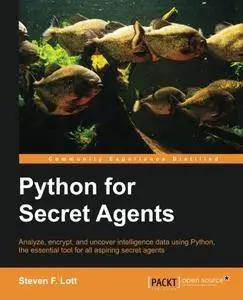Steven F. Lott, "Python for Secret Agents"
English | ISBN: 1783980427 | 2014 | EPUB/MOBI+Code files | 159 pages | 9,6 MB
English | ISBN: 1783980427 | 2014 | EPUB/MOBI+Code files | 159 pages | 9,6 MB
Analyze, encrypt, and uncover intelligence data using Python, the essential tool for all aspiring secret agents
About This Book
Build a toolbox of Python gadgets for password recovery, currency conversion, and civic data hacking
Use steganography to hide secret messages in images
Get to grips with geocoding to find villains' secret lairs
Who This Book Is For
If you are a Python beginner who is looking to learn the language through interesting projects, this book is for you. A basic knowledge of programming and statistics is beneficial to get the most out of the book.
What You Will Learn
Quickly get to grips with using Python to create tools and solve problems
Manipulate image files and learn how to encode messages into an image using steganography
Gather a file's hidden secrets, such as EXIF data and ZIP archive contents
Build applications that access, filter, and analyze live data from the Web
Design Python modules, libraries, and applications
Customize your Python environment with specialized packages
Extract data using HTTP and FTP internetworking protocols
In Detail
Python is an easy-to-learn and extensible programming language that allows secret agents to work with a wide variety of data in a number of ways. It gives beginners a simple way to start programming, but Python's standard library also provides numerous packages that allow Python-using secret agents to easily utilize very sophisticated information processing.
This book will guide new field agent trainees through putting together a Python-based toolset to gather, analyze, and communicate data. It starts by covering the basics and then moves on to sections such as file exchange, image processing, geocoding, simple trigonometry, and more sensitive statistical processing. You will then learn how to use polynomials to encode and decode data in different representations. Furthermore, this book shows you how to add tools to a Python environment, work with images, and parse HTML web pages to extract meaningful data. The idea of adding packages to Python is central to how an agent will leverage these tools for data processing.



